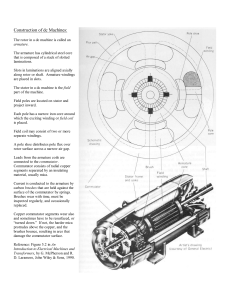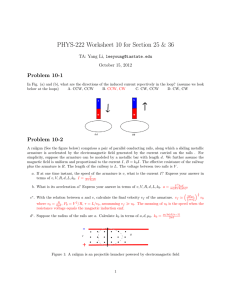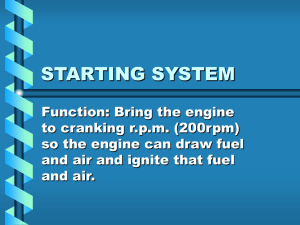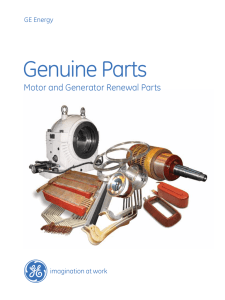interpoles
advertisement
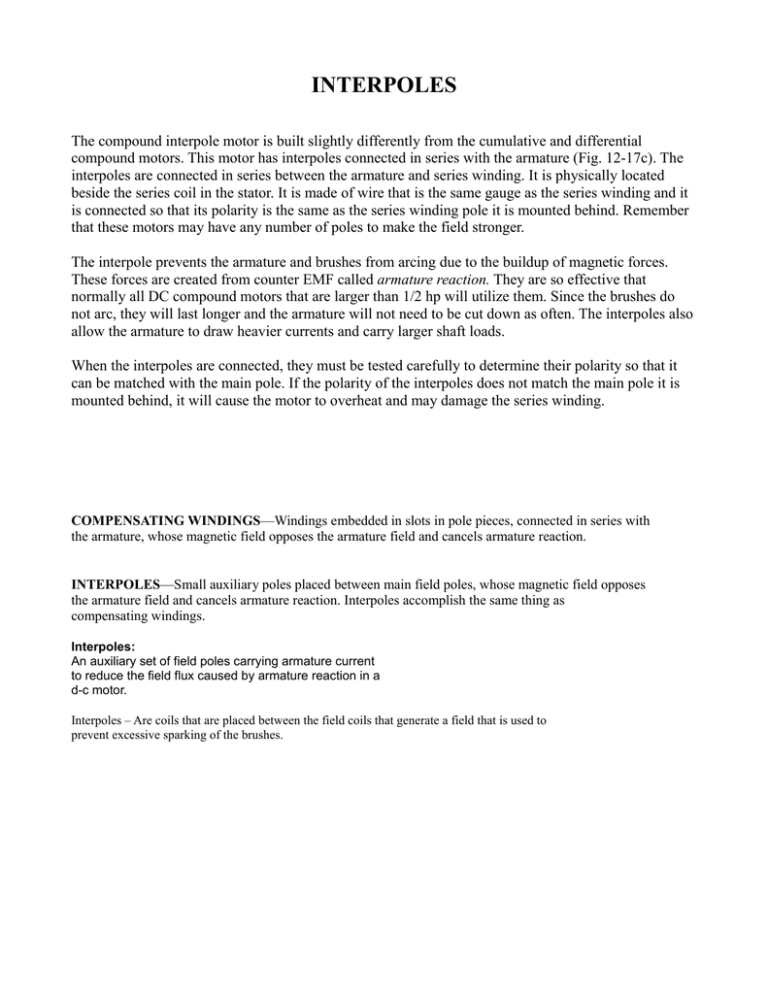
INTERPOLES The compound interpole motor is built slightly differently from the cumulative and differential compound motors. This motor has interpoles connected in series with the armature (Fig. 12-17c). The interpoles are connected in series between the armature and series winding. It is physically located beside the series coil in the stator. It is made of wire that is the same gauge as the series winding and it is connected so that its polarity is the same as the series winding pole it is mounted behind. Remember that these motors may have any number of poles to make the field stronger. The interpole prevents the armature and brushes from arcing due to the buildup of magnetic forces. These forces are created from counter EMF called armature reaction. They are so effective that normally all DC compound motors that are larger than 1/2 hp will utilize them. Since the brushes do not arc, they will last longer and the armature will not need to be cut down as often. The interpoles also allow the armature to draw heavier currents and carry larger shaft loads. When the interpoles are connected, they must be tested carefully to determine their polarity so that it can be matched with the main pole. If the polarity of the interpoles does not match the main pole it is mounted behind, it will cause the motor to overheat and may damage the series winding. COMPENSATING WINDINGS—Windings embedded in slots in pole pieces, connected in series with the armature, whose magnetic field opposes the armature field and cancels armature reaction. INTERPOLES—Small auxiliary poles placed between main field poles, whose magnetic field opposes the armature field and cancels armature reaction. Interpoles accomplish the same thing as compensating windings. Interpoles: An auxiliary set of field poles carrying armature current to reduce the field flux caused by armature reaction in a d-c motor. Interpoles – Are coils that are placed between the field coils that generate a field that is used to prevent excessive sparking of the brushes. Interpoles, also known as compensation windings, are extra field poles "in-between" the main field poles, thus "interpoles". (Not the same as INTERPOL the Intl. police agency.) It does electrically what advancing the brush angle does mechanically, only better. I actually looked this up one time. In any motor with brushes, the optimum commutation point between the brushes and commutator shifts with increasing rpm and current. Therefore the brush will tend to arc over at higher rpm/current. Basic motors like the ADV DC motors compensate by advancing the brush angle to a compromise point to achieve minimal arcing under most conditions. More advanced motors like the Kostov use interpole windings for optimal commutation. Interpoles actually magnetically force the commutation angle back to directly where the brush is sitting. They shift the commutation angle back to zero under all conditions. No brush advance is needed for rotation in either direction or for regen. It is also more expensive, and there are size restrictions to fit them in. It is difficult to do on a smaller motor. • Because the commutator is essentially a mechanical switch, rapidly making and breaking a high current circuit, the switch is prone to sparking and the generation of Radio Frequency Interference (RFI) which can disrupt the working of other electronic circuits in the vicinity. In very large motors the propensity for sparking can be reduced by the addition of "interpoles" or "commutating poles", narrow auxiliary windings midway between the main stator poles. These are connected in series with the rotor windings and produce an MMF equal and opposite to the rotor MMF so that the effective flux between the main poles is zero. Commutation is designed to occur the instant when the current passes through zero between the negative and positive half cycles and this takes place when the rotor is midway between the main poles. By neutralising the flux in this region the possibility of sparking is reduced.
